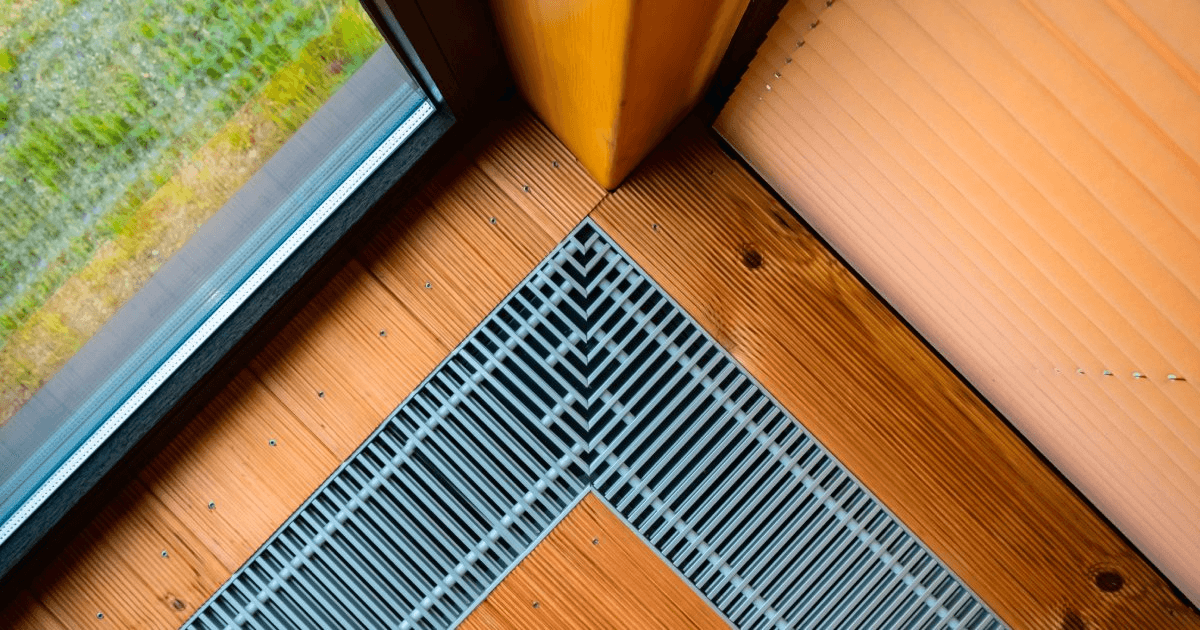Replacing old vent covers may seem like a quick, simple job. However, many homeowners and contractors quickly realize that this task requires more attention to detail than expected. Proper vent cover installation helps an HVAC system deliver balanced airflow for more efficient operation and prevents damage to ducts and flooring, so it pays to do it right.
Here are nine mistakes to avoid when installing new vent covers.
1. Choosing the Wrong Cover Size
Selecting the ideal vent cover size is foundational for a successful installation, but many people confuse the face size with the duct opening size. Most vent covers have faces approximately two inches wider and taller than the neck portion that slides inside the duct. That’s why you should always measure the duct opening itself, not the face of the old vent cover, when ordering replacements.
Use a tape measure to note the exact length and width inside the duct’s flange, rounding to the nearest one-eighth inch. Construction practices have evolved, and regional variations in ductwork size mean assumptions can easily lead to ordering the wrong cover.
A vent cover that’s even a quarter-inch too large or small can result in weak airflow, rattling noises, or gaps where dirt and pests can enter. Taking an extra few minutes to measure carefully saves headaches during and after installation.
2. Ignoring Material Compatibility
Material selection is crucial and should match the room’s environment and intended use. Wooden vent covers offer a warm, classic look but tend to warp or crack in moisture-prone areas like kitchens, bathrooms, or laundry rooms. Metal vent covers are ideal for these spaces because they resist rust and water damage far better.
When installing floor vents, consider the reasons you should only place steel grilles on the floor. Steel is strong enough to withstand repeated foot traffic and heavy furniture without bending or breaking, providing durability and reliability over years of use.
3. Overlooking Airflow Direction
A common vent cover installation mistake is ignoring which way the louvers face. Vent covers are designed to direct airflow for maximum comfort and system efficiency. If louvers point the wrong way—such as away from open areas or toward walls—air circulation suffers. Incorrect airflow direction can cause hot or cold spots, forcing your HVAC system to work harder.
Always check the manufacturer’s guidelines or product markings for correct orientation. Angle louvers toward the center of a room for even air distribution. This small step can noticeably improve comfort without incurring additional costs.
4. Forgetting to Clean the Duct First
Before fitting a new vent cover, clean inside the ductwork first. Over months or years, dust, lint, and debris collect within vents and can blow back into your living spaces after installation.
Use a vacuum with a narrow attachment to reach at least 12 inches into the duct. Removing buildup improves indoor air quality and helps your new vent covers last longer by reducing clogging. Cleaning may add extra time to your project, but the benefits for your health and HVAC system make it worthwhile.
5. Using Improper Mounting Hardware
The mounting hardware you select impacts the security and safety of your vent covers. Using screws that are too long risks puncturing the ductwork beneath or cracking tile or hardwood floors.
For drywall ceilings or walls, use drywall screws that are approximately one inch long for a secure hold. When attaching metal vent covers, short, self-tapping sheet metal screws (typically half an inch to three-quarters of an inch) prevent damage and hold the covers snugly. Inappropriate fasteners often cause vent covers to loosen and rattle whenever your HVAC system kicks on, which can be distracting and reduce system efficiency.
6. Installing in the Wrong Location
During home renovations or room redesigns, vents may be relocated for aesthetic reasons. However, vent placement is carefully designed to support an HVAC system’s airflow plan. Moving a vent under a bed, behind a couch, or near heavy curtains might look better aesthetically but can severely limit air circulation in the room.
If airflow is blocked, the HVAC system may overcompensate, leading to temperature inconsistencies or energy inefficiencies. Before moving a vent cover, consult the system’s layout or speak with an HVAC technician. Proper vent placement ensures that return and supply air move freely, maximizing comfort and maintaining balanced pressure across the home.
7. Prioritizing Style Over Function
Decorative vent covers have grown in popularity, particularly in custom or high-end interiors. However, style should never come at the cost of performance. Ornate covers with intricate patterns or narrow slots often restrict airflow, resulting in longer heating or cooling cycles and greater energy use.
Find a cover that supports function and complements the room’s design. Look for grilles with wide, angled louvers that blend well with an interior while still allowing air to flow freely. When in doubt, consult airflow ratings provided by the manufacturer before making a purchase.
8. Not Sealing Around the Vent
Installing the vent cover is only part of the job. What surrounds it matters too. Leaving gaps around the perimeter of a wall or floor vent allows air to leak into surrounding spaces like wall cavities or subflooring. Gaps also invite dust, pests, or moisture to enter the ducts.
To fix gaps, apply foam gasket tape around the back of the vent cover before mounting, especially on uneven surfaces. A thin bead of paintable caulk creates a finished, sealed edge for cracks or visible gaps that may occur after installation. This is a small but impactful step that can improve airflow consistency and reduce long-term maintenance needs.
9. Failing To Test After Installation
Once you secure the new vent cover, keep your eyes peeled for problems. Poor positioning, airflow blockages, or rattling noises may not be apparent until the HVAC system is in operation. Before putting away your tools, turn the system on and inspect the airflow at each register.
Make sure air flows freely and the vent cover remains securely in place without vibration. If you hear rattling or feel uneven pressure, double-check that the cover is flush, the hardware is snug, and the duct is unobstructed.
Vent Cover Installation Made Easy
Avoiding these mistakes when installing new vent covers can make the difference between a quick upgrade and long-term HVAC frustration. Above all, take your time, double-check your work, and test your results, tweaking the vent cover placement as needed for optimal HVAC efficiency.




















